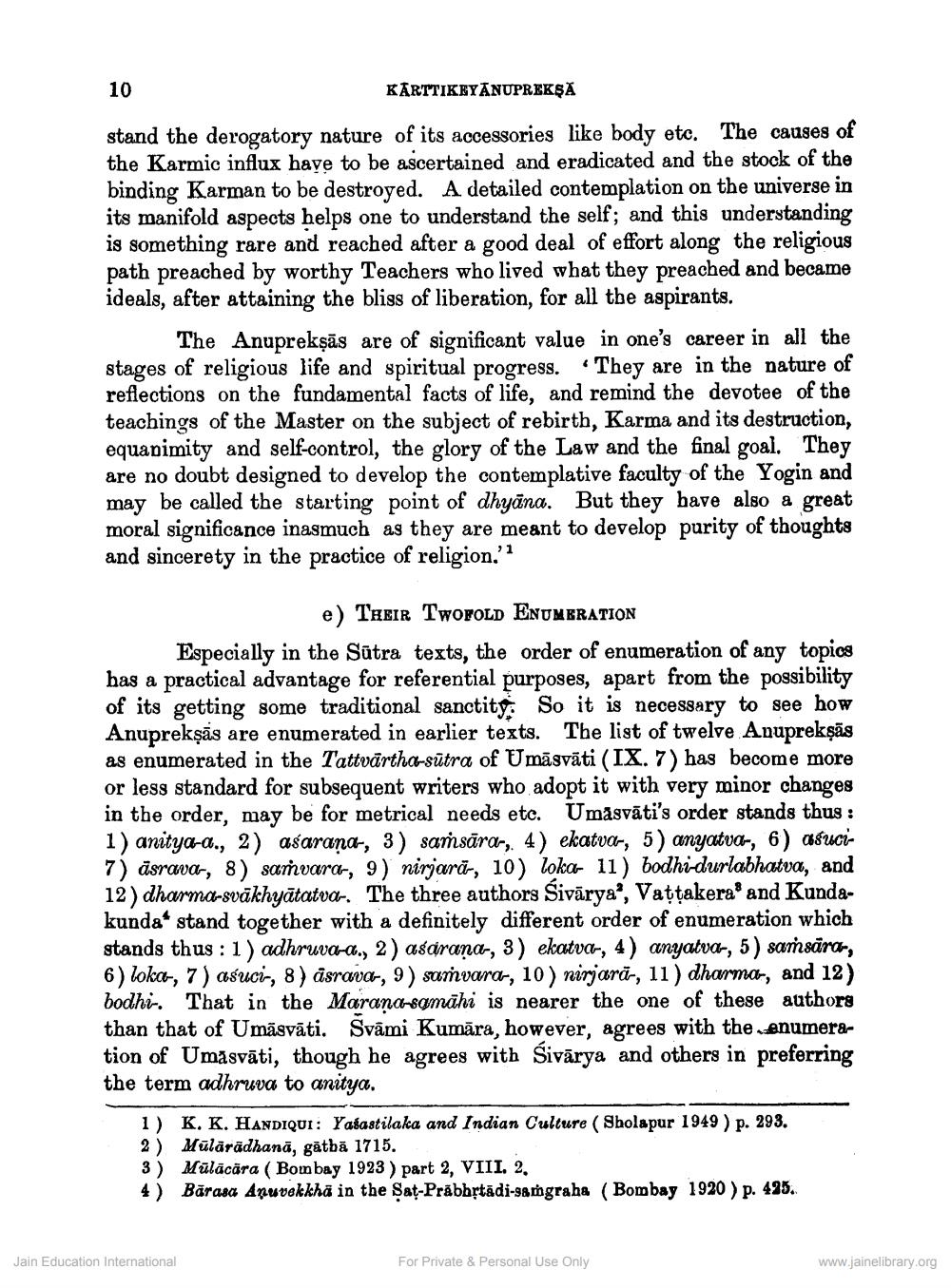________________
10
KĀRTTIKEYANUPREKŞA
stand the derogatory nature of its accessories like body etc. The causes of the Karmic influx have to be ascertained and eradicated and the stock of the binding Karman to be destroyed. A detailed contemplation on the universe in its manifold aspects helps one to understand the self; and this understanding is something rare and reached after a good deal of effort along the religious path preached by worthy Teachers who lived what they preached and became ideals, after attaining the bliss of liberation, for all the aspirants.
The Anuprekşās are of significant value in one's career in all the stages of religious life and spiritual progress. They are in the nature of reflections on the fundamental facts of life, and remind the devotee of the teachings of the Master on the subject of rebirth, Karma and its destruction, equanimity and self-control, the glory of the Law and the final goal. They are no doubt designed to develop the contemplative faculty of the Yogin and may be called the starting point of dhyāna. But they have also a great moral significance inasmuch as they are meant to develop purity of thoughts and sincerety in the practice of religion.'
e) Their TwoFOLD ENUMERATION Especially in the Sūtra texts, the order of enumeration of any topics has a practical advantage for referential purposes, apart from the possibility of its getting some traditional sanctity So it is necessary to see how Anuprekşās are enumerated in earlier texts. The list of twelve Anuprekşās as enumerated in the Tattvärtha-sūtra of Umāsvāti (IX. 7) has become more or less standard for subsequent writers who adopt it with very minor changes in the order, may be for metrical needs etc. Umäsvāti's order stands thus : 1) anitya-a., 2) asarana, 3) samsāra-, 4) ekatva-, 5) anyatva-, 6) asuci7) asrava-, 8) sarvara-, 9) nirjarä-, 10) loka- 11 ) bodhi-durlabhatva, and 12) dharma-svākhyātatva-. The three authors Sivärya', Vaţtakera and Kundakunda stand together with a definitely different order of enumeration which stands thus : 1) adhruva-a., 2) asarana, 3) ekatva, 4) anyatva-, 5) saṁsārar, 6) loka-, 7 ) asuci-, 8 ) ásrava-, 9) samvara-, 10 ) nirjarä-, 11) dharmar, and 12) bodhi-. That in the Marana-samähi is nearer the one of these authors than that of Umāsvāti. Svāmi Kumāra, however, agrees with the enumeration of Umāsvāti, though he agrees with Sivārya and others in preferring the term adhruva to anitya.
1) K. K. HANDIQUI: Yasastilaka and Indian Culture (Sholapur 1949 ) p. 293. 2) Mülārādhanā, gātbă 1715. 3) Mülācāra (Bombay 1923 ) part 2, VIII. 2. 4) Bārasa Anuvekkha in the Sat-Prābhrtādi-samgraha (Bombay 1920 ) p. 495.
Jain Education International
For Private & Personal Use Only
www.jainelibrary.org




